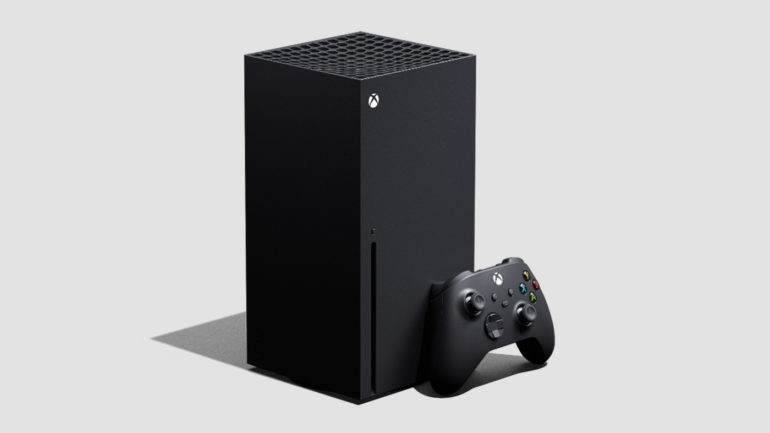Although we learned a lot about the Xbox Series X experience through Shannon’s preview last month, I’ve been fortunate to spend a couple of weeks with the mean green machine. As someone who’s long been in the Xbox ecosystem, I’ve been excited to see where Microsoft can improve upon all of the goodwill they’ve earned over the later years of the last generation.
I’m thankful that Microsoft has doubled down on its service first, hardware second approach that places consumers, value, and convenience ahead of the mighty dollar. That hasn’t stopped them from engineering one of the sleekest, most gorgeous consoles ever that boasts the raw computing power to realise their vision.
MORE XBOX SERIES X LAUNCH COVERAGE:

The Monolith
Even before you carefully peel back the tabs holding the beast at bay, the first thing you’re bound to notice is that the Xbox Series X isn’t a lightweight piece of tech. At 4.45kg, that’s 9.8lb for those across the pond, it’s a dense factory of power that leans so comfortably into a sleek, futuristic brutalist aesthetic.
Most importantly, it’s subtle and looks like premium hardware. It’s not likely to stand out too much atop a crowded entertainment unit, in fact, it’s more than likely to blend right into the crowd of mostly black subwoofers, speakers, and soundbars. It looks as though it’s made to fit in and work with what you’ve already got, and I feel it does that.
It’s a minimalist design across the board. The front-facing panel has a slot for discs, the iconic Xbox logo backlit power button, a single USB port, and a sync button which doubles as an infrared receiver for legacy peripherals—when the big rival doesn’t even support last generation’s controller, this speaks to the consumer-friendly ethos that the company has put front and centre to claw back a lot of goodwill.
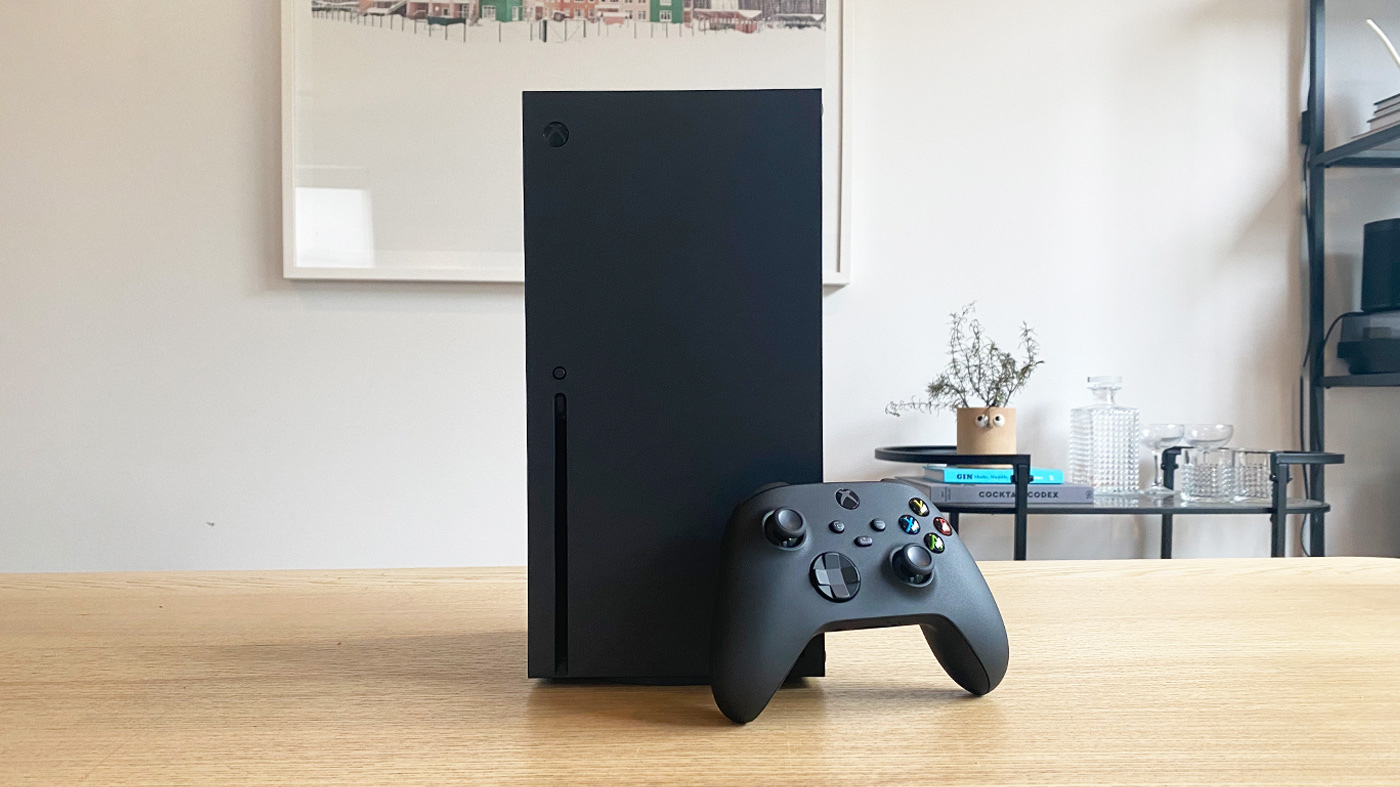
The rear has two extra USB ports, the figure-eight power socket, HDMI 2.1 out, an ethernet port, and, of course, the port for the proprietary expandable SSD memory. If you’re planning on placing the console in a horizontal configuration—as I have—the right-facing side, if you’re looking at the panel with the power button, has four rubber feet so that the console’s gorgeous matte finish won’t be scuffed in the process, though it seems rather resistant to scratches altogether. That said, it’s a magnet for fingerprints and dust so have the wipes at the ready.
Who could forget the feature piece of tinsel that makes the Series X design a real conversation starter? The green crown that rests on the top of the console is a nice little piece of fan service. It’s a nice effect, created by simply colouring the plastic on the inner rim of each small hole in the top panel—which doubles as an escape for the heat the console’s hefty fan pumps out—though part of me wishes they leaned into the decadence this console already exudes and popped a light in the top.
For the Series X2 perhaps.
The only thing I’m somewhat let down about is the fact the console doesn’t yet seem to support SPDIF for higher-end audio devices, such as the Razer Leviathan soundbar I keep on my desk. It feels like a bit of an oversight given the popularity of optical audio these days. I do hope there’s some kind of adaptor that’s in the works so that users of premium headsets like SteelSeries’ Pro Wireless which, at this stage, can only work with the console by plugging directly into the controller’s input jack. Credit to the Astro A50s, on the other hand, which through a firmware update transmits all of its audio through USB.
Controller
I’ve long preferred the feel of an Xbox controller over rival pads and although I’ve not gone hands-on with the DualSense, I certainly feel as though Microsoft has put their best, ergonomic foot forward with the new controller. It’s very familiar, resting largely on its laurels while providing small, iterative changes.
The controller shares the same gorgeous matte finish as the console itself and feels noticeably smaller this time around. Its new, more compact shell molds to the hand a lot easier, while the grips live up to their name as minuscule nodes keep the hands in place—likewise for the triggers which are also coated in the texture which helps the finger adhere to its more rounded-off design which, again, helps on a basic comfort level.
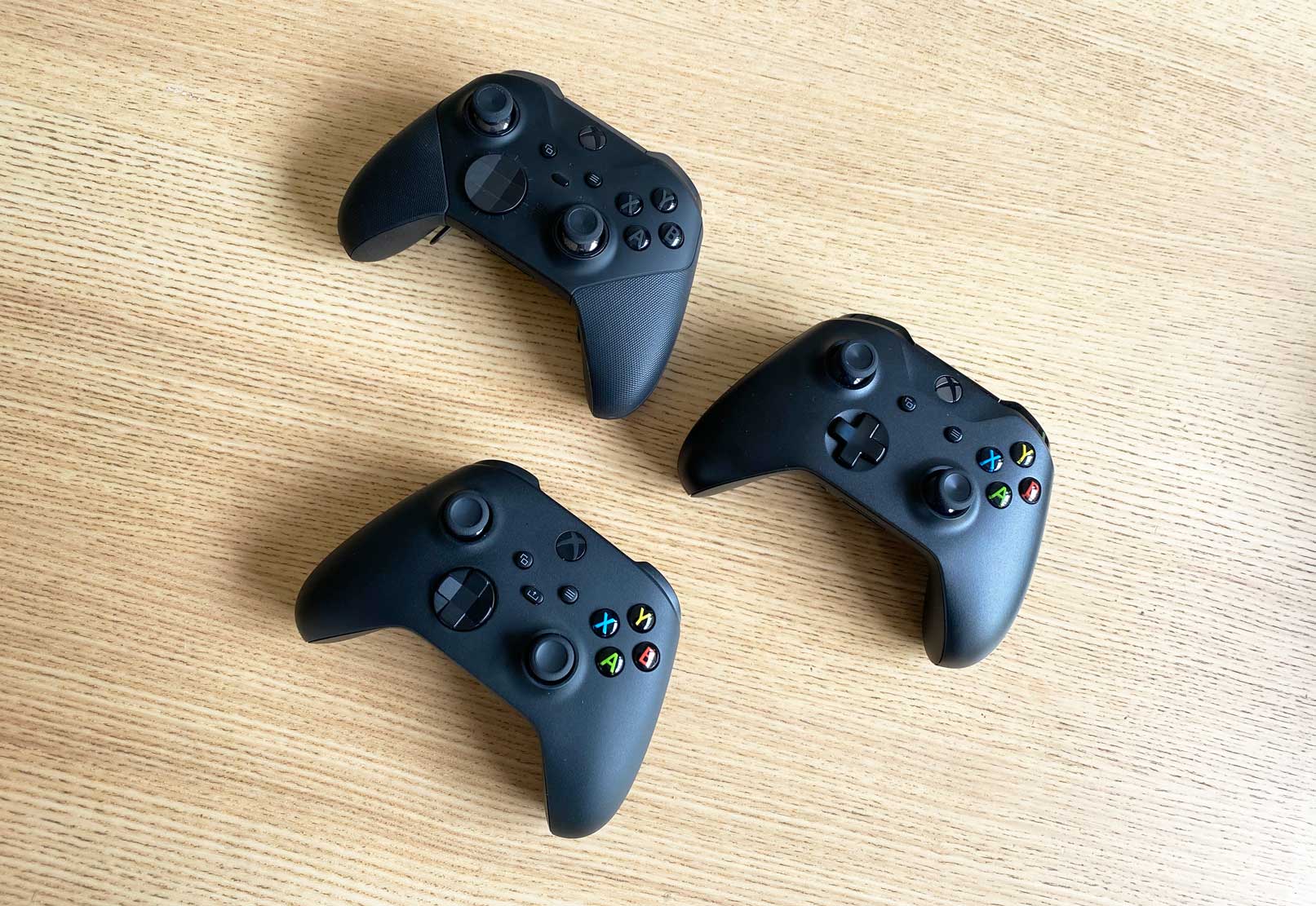
The directional-pad is less crude and feels a lot like a perfect blend of both the classic configuration and the faceted pad that is coupled with the Elite premium controller that Microsoft has made a couple of iterations of. Of course, it isn’t quite as high-end as that controller—which retails for $249 I might add—but it certainly feels like a marked improvement over the cheaper model on offer from the last generation.
The most useful inclusion for me, in particular, is the new share button, though I’ll dive into that below under the quality of life additions.
Like much of what Xbox has endeavoured to do with this console launch, it’s the small quality of life changes that mean the most. It hasn’t reinvented the wheel or introduced any off-brand gimmicks, it simply does what it always has—only better. One area where they truly let themselves down is the continued use of batteries, especially in light of the fact their premium controller supports rechargeable battery.
Accessories and Legacy Support
As mentioned earlier, Series X supports its own proprietary SSD expansion storage, specifically designed in partnership with Seagate. This is a double-edged sword because although it’s built with the much-touted Velocity Architecture in mind to offer faster load times and match the performance of the console itself, it’s staggeringly expensive.
So much so that to buy the console and an expansion card at launch would set you back somewhere in the ballpark of $1,110 and that’s before you pick up any of the launch titles you’re interested in.
Although, if you’re in a position to be able to justify it, it’s pretty much the only option available to add an extra 900GB of storage to the 802GB leftover from the console’s base 1TB which, given the ballooning size of games, is a handy bonus. If you’ve still got an external HDD loaded up with your Xbox One X games, you’re also able to plug that in and utilise that, although games optimised for Series X obviously won’t boot from it—but it’s still a handy means of shifting games between three drives instead of just one.
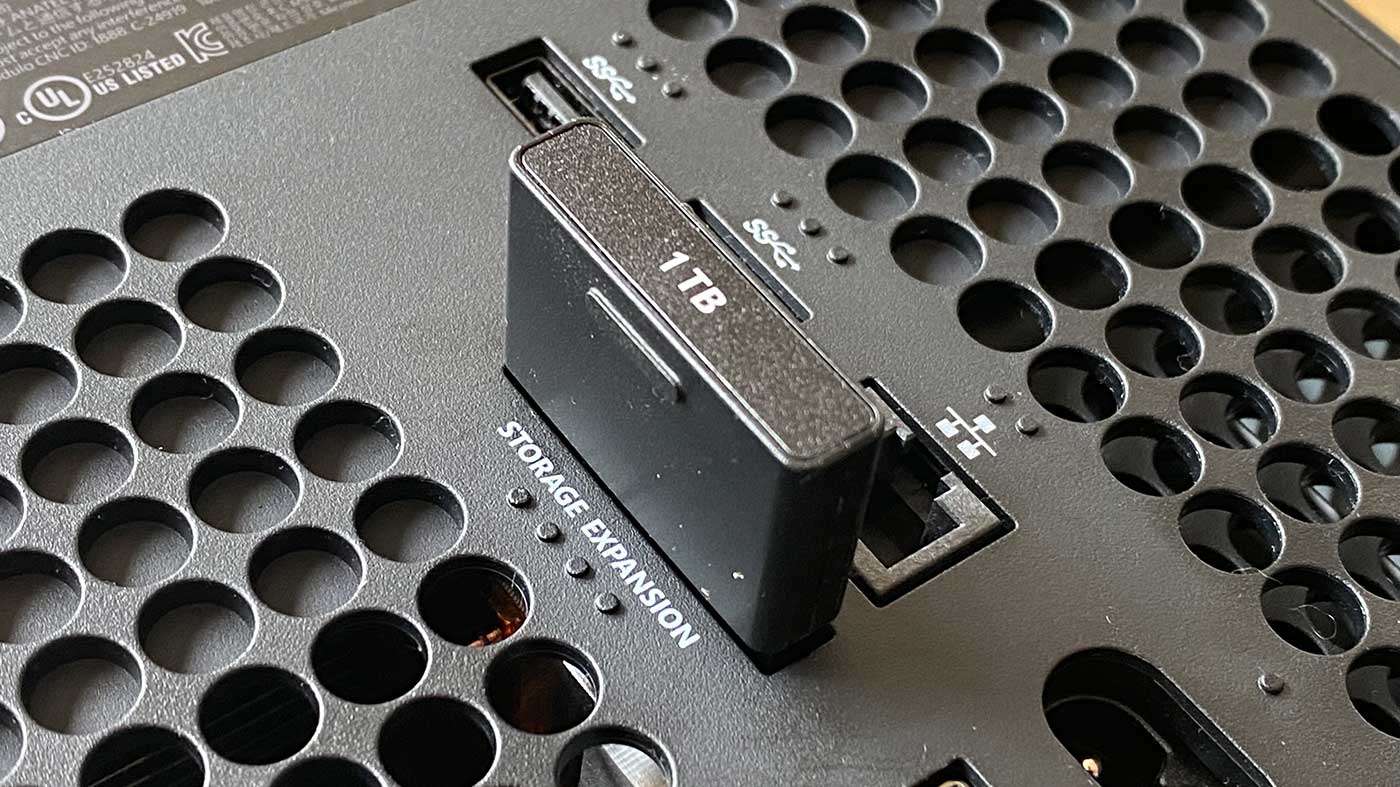
Aside from the optical devices noted above, one area where Microsoft has been most consumer-friendly is respecting the investments their customers have made in the past and it’s amazing that the Series X manages to support practically all legacy peripherals—in fact, any officially branded wired and wireless Xbox One accessories will work, as well as headsets that can plug into the controller’s 3.5mm input jack.
It would have been easy to pump out a line of Series X specific accessories and force consumers to part with even more money, but this is one player-focused initiative that I don’t think Xbox as a whole is lauded enough for.
Launch Window
The area where Xbox Series X falls down a little bit at launch is in its software line-up. The day Halo: Infinite got pushed back to next year, doubts did begin to circle my mind as I wondered what exactly could be pulled together to help launch this beast. Unfortunately, aside from some decent third-party support, the console is lacking anything that could be considered a killer app.
Aside from some optimised indies and other third-party games, the real heavy-hitters of the day one line-up (listed below) are few and far between. Although I’ve not been fortunate to play them all, I’ve played a number of them—specifically the Microsoft first-party titles like Gears 5 and Gears Tactics that are seeing some wonderful optimisations for the new hardware. In these titles alone I’ve seen just how much of a difference improved load times, enhanced textures and steadier frame rates can make in falling in love with certain games all over again.
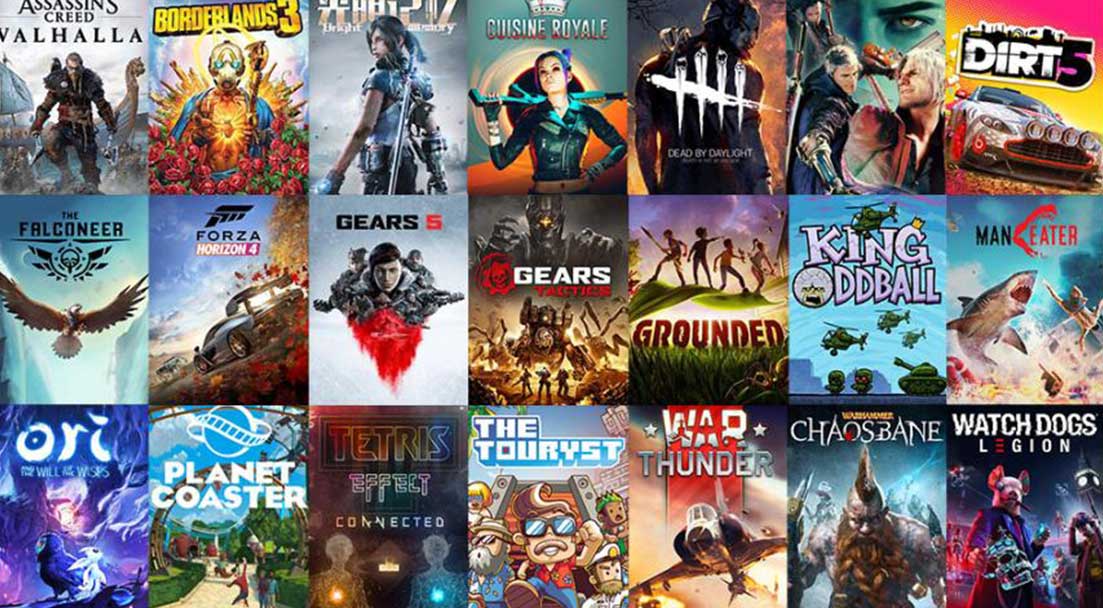
And although Press Start has spent time with the likes of Assassin’s Creed: Valhalla and Dirt 5 on the Series X, we’ve not been able to speak to those experiences in the lead up to this review. I think it’s safe to say that the improvements are many.
- Assassin’s Creed: Valhalla
- Yakuza: Like A Dragon
- Gears Tactics
- Tetris Effect: Connected
- The Falconeer
- Dirt 5
- Watch Dogs Legion
- Devil May Cry V: Special Edition
- Observer: System Redux
- NBA 2K21
The fact that I can be playing Gears 5 again, failing miserably trying to beat even the first level on the new difficulty setting, and still having a good time thanks to not getting stuck in a tiresome loop of load screen limbo is great.
There’s even a whole scope of games that are receiving optimisations for the next-generation hardware, though some are coming much sooner than others. Microsoft stalwarts such as Ori and the Will of the Wisps and Forza Horizon 4 will receive their patches at launch, while updates on games like Marvel’s Avengers won’t arrive until next year.
There’s enough to keep you occupied at launch, though. Especially if you’ve held off playing new blockbuster third-party titles like Assassin’s Creed: Valhalla which, as one of the tentpole releases to perform at 4K and 60FPS, is set to test the console and help flex its muscles come launch day. Even though we’ve also got The Medium expected to release next month on December 10, provided it manages to pass certification after being denied this week, it’s going to be some time before we can say we’ve had some great console exclusives that really push this hardware in any meaningful way.
With the likes of Scorn and Bright Memory: Infinite set for release hopefully in the first half of 2021, it’s fair to say the near future for the console’s software prospects are pretty promising after all.
Late 2021 and Beyond
As touched on when speaking about Game Pass, the future of Microsoft’s first-party is a particularly tasty carrot that feels as though it’s been dangling in front of our chomping bit for too long.
Having seen reveals for long-rumoured games like Fable and Senua’s Saga: Hellblade II, it’s looking as though there might be light at the end of the tunnel for some of these studios that Microsoft enveloped in the last handful of years. Of course, pair this with the most recent purchase of Bethesda and you’re looking some great years ahead as a Game Pass subscriber, even if the next Fallout or whatever Arkane works on after Deathloop aren’t exclusive to the Xbox platform.
Here’s a list of some of the key games we can expect for Series X in the future, let the (*) denote games rumoured to be exclusive to the new generation of hardware either through developer choice with regards to third-party or because, in Microsoft’s case, they’ve suggested they’ll only be supporting legacy consoles up until 2022.
- As Dusk Falls
- Avowed (*)
- Call of the Sea
- Everwild (*)Fable (*)
- Forza Motorsport (*)
- Halo Infinite
- S.T.A.L.K.E.R. 2 (*)
- State of Decay 3 (*)
- Senua’s Saga: Hellblade II (*)
- Starfield
- Suicide Squad: Kill the Justice League (*)
- The Elder Scrolls VI
So although the present might appear to be a little bleak as far as a first-party line-up goes, I do believe all hands at Microsoft’s studios are pulling in the right direction. If they can deliver on their promises and launch their exclusives on Game Pass day one, at no extra cost to subscribers, then they’re in a strong position to wrestle back some control over the majority share of gamers today whose hearts currently beat for PlayStation.
As questions surround Master Chief’s next adventure and Gears nears the end of its mighty second trilogy, what Microsoft needs are a couple of new, big tentpole franchises to rival PlayStation Studios and all they bring to the table. If they can’t deliver on this, with all of the talent working under their banner now, I fear they never will.
Xbox Game Pass
I’ve screamed it from the heavens for a while now and I’ll say it again: Xbox Game Pass is the best deal in not only gaming but entertainment. As a rotating library of software, the quality can be a little bit hit and miss, but there’s also plenty of buried treasure that makes its way through the program.
I would never have stumbled upon The Touryst were it not for Xbox Game Pass.
And ultimately, that’s the beauty of the service in that it’s a doorway into worlds and experiences you wouldn’t regularly commit your wallet to, knowing that every purchase carries risk. The biggest selling point heading into the Series X generation is that, as they’ve always been, all of Microsoft’s upcoming first-party titles launch day one on the service.
Although those first-party stables have been a bit bare-bones over the past seven years, if you’ve read the news—I’m of course referring to the looming acquisition of Zenimax and Bethesda’s development studios with them—it’s plain to see that the next handful of years are certainly exciting ones for Microsoft’s first-party which, after a few painful years of maintaining empty stables, can claim to have a few bolters all of a sudden. This extends to other studios acquired in recent years like Compulsion, Obsidian, and Ninja Theory—all quality teams who’ll excel with Microsoft’s support.
There’s also a little game called The Elder Scrolls VI, heard of it?
Xbox recently rolled out remote play features for legacy titles and it’s so cool to see that working on our shores. I’m even more excited at the looming launch of cloud-streaming because the ability to take a game like Fable on the go when the time comes is all too exciting.
It’s yet another feature of Game Pass that makes it the undisputed king of subscription services.
Play Anywhere and the Value of the Cloud
Another undervalued feature that Xbox has carried with it for the past generation or so is their belief that no matter where you buy the game, it should be playable anywhere and, to their credit, they’ve delivered on this time and again through their first-party line-up. Coupled with services like Game Pass, it’s easier than ever to have a game like Gears 5, for example, installed and at the ready on both console and PC and drift between the two at will and with no fuss.
Knowing they’re still standing right behind this core belief is a large reason why I’ve continued to believe in Xbox as a brand. It’s a fantastic ecosystem to be locked into, and the fact it’s no longer locked to even a console is even better for gamers from all walks who perhaps can’t justify two premium consoles in November but are interested in that other side of the fence.
Pick up your phone, subscribe to Game Pass and when cloud-streaming is here you’ll be able to be a part of the ecosystem and enjoy a spread of software that encompasses all moods. Then if you’re impressed, you’re able to invest later by buying a console—perhaps a later iteration of a Series console—and bring it all with you through cloud-syncing. The fact features like this are never praised speak to how ingrained and normal it is to see Microsoft looking out for the player and delivering on one of the generation’s biggest selling points: convenience.
The Share Button
Although it’s bound to mean more to someone in my fortunate position of reviewing pre-release content, being able to more seamlessly pull captures off of the Xbox Series X is a big relief. It’s an area where I felt Microsoft continued to lag behind PlayStation last generation and it’s great to see they’ve made moves to bridge that gap—if only slightly.
Of course, controller mapping with controllers like the Elite has allowed users to opt for a dedicated capture button in the past, having one built-in takes casts that inconvenience aside.
I still find the export options to be rather limiting when you’ve not got an external hard-drive plugged in. Captures stored internally can be uploaded to Xbox Live, after which they can be found on the app and exported with much greater variety, including email or even Instagram which are options not available on the console itself. Other than that, the options are basically OneDrive or nothing.
By default, the share button is mapped to capture a screen on a single press while holding it records video capture—the length and quality of both can be decided within the settings. All in all, it’s a stride in the right direction although it’s imperfect and falls a little short of bridging the gap to PlayStation’s previous implementation.
Snappier OS
The snappier, upgraded OS isn’t something that’s locked to Series X or Series S specifically, having launched in October, it’s available for all of those within the modern Xbox ecosystem and, I must say, it’s full of subtle improvements over the previous iteration including significant bumps in speed and performance making for a much snappier and far less frustrating user experience.
Bells and whistles like profile themes, far less clinical edges on the infamous tiles which are now rounded off, and a better sign-in experience are all nice—as is the fresh coat of paint in general—but what’s most important is that the experience is no longer rife with the failures to launch that plagued the old One X experience, plus making your way through all areas of the dashboard no longer suffers from inexplicable buffers as the OS scurries to catch up with your input.
Considering the interface is working much better across the board, even on legacy consoles, it’s hard to chalk the smoother dashboard to the power of the Series X alone, but it’s presumed high-level of performance and upkeep throughout the generation will have it to thank in the long run, I feel.
Overhauled Storefront
Another key area in which Microsoft has laboured behind its contemporaries in the past is in how it presents its most important products: the games.
I felt as though the old storefront was a seemingly endless onion, to lean on an analogy from the all-star film Shrek, where you’d be forced to plunge several layers deep to find anything you’re looking for. An even greater sin was that it was painfully slow. Thankfully, it’s been remedied with a much faster interface—twice as fast—that I feel closest matches the PlayStation store.
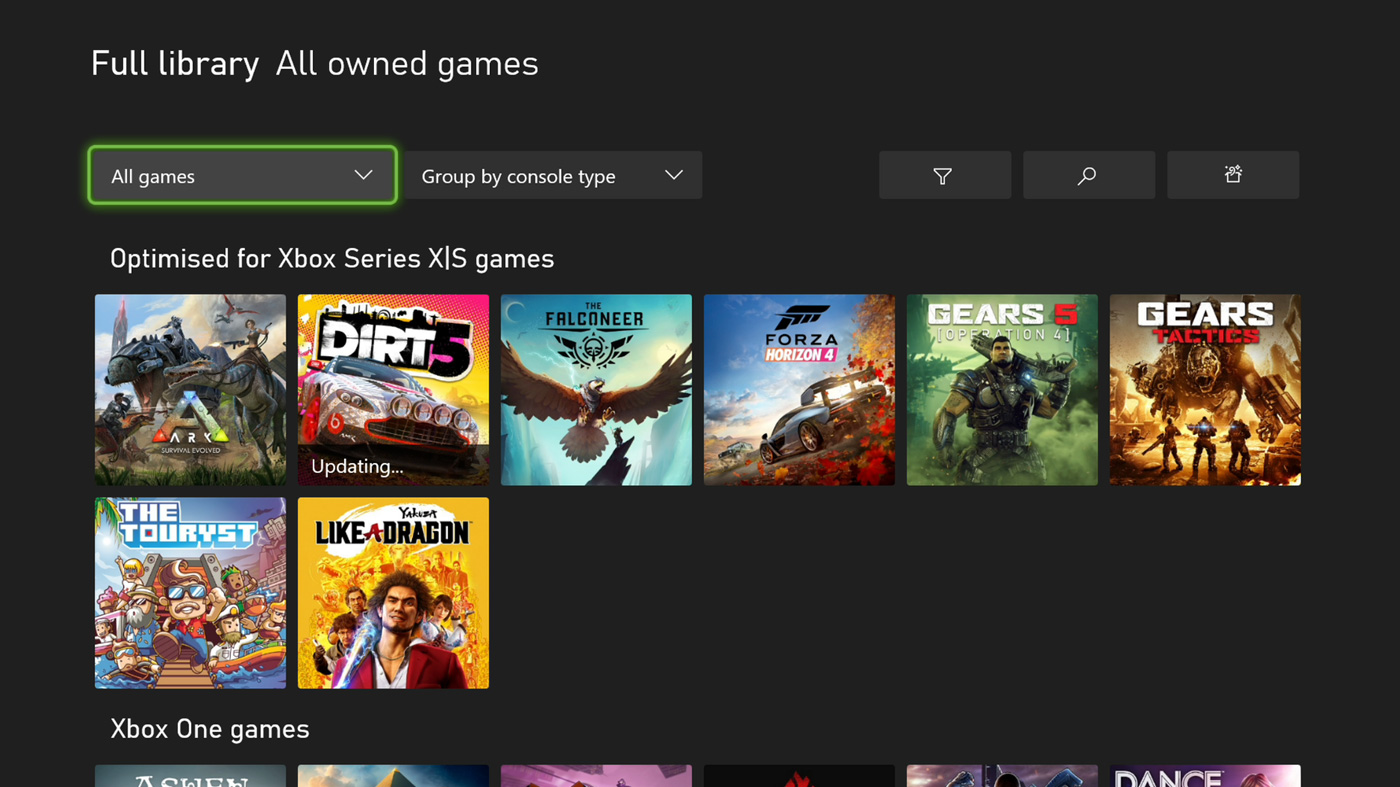
With a left-aligned menu to browse categories spanning all manner of entertainment, from the games themselves, to film, and right through to the hardware itself. It’s all there, far more organised than it’s ever been which makes it easier than ever to peruse your options in the search for something new to play or watch. I can’t fathom why it’s taken them as long as it has to adopt a layout like this, but I’m relieved it’s here.
So far, I’ve bought plenty from this storefront thanks in large part to there being a wishlist and an easier to navigate cart—if either of these things existed previously, I apologise. That speaks to how unintuitive the store used to be.
The New App
Just as the primary UI for the console got a major overhaul in the lead-up to the Series X launch—it’s a unified dashboard that will remain consistent throughout the family consoles, old and new—a new version of the official companion app released, and brought with it plenty of new and useful features.
Although not everything made the cut in designing this minimalist overview of your individual Xbox experience, it certainly checks off all of the most essential things one might need for remote use. The home screen provides a great snapshot at what friends are up to, what games are popular with your friends list, recommends Game Pass titles to you—although I’m not sure of the criteria because I had some odd suggestions—plus it also provides you a literal jumping-off point to hop straight back into any given game on your recently played list.
Being able to boot a game, and the whole console for that matter, from your phone, is a small pleasure even if the time saved is minimised by how fast the Series X boots up in the first place.
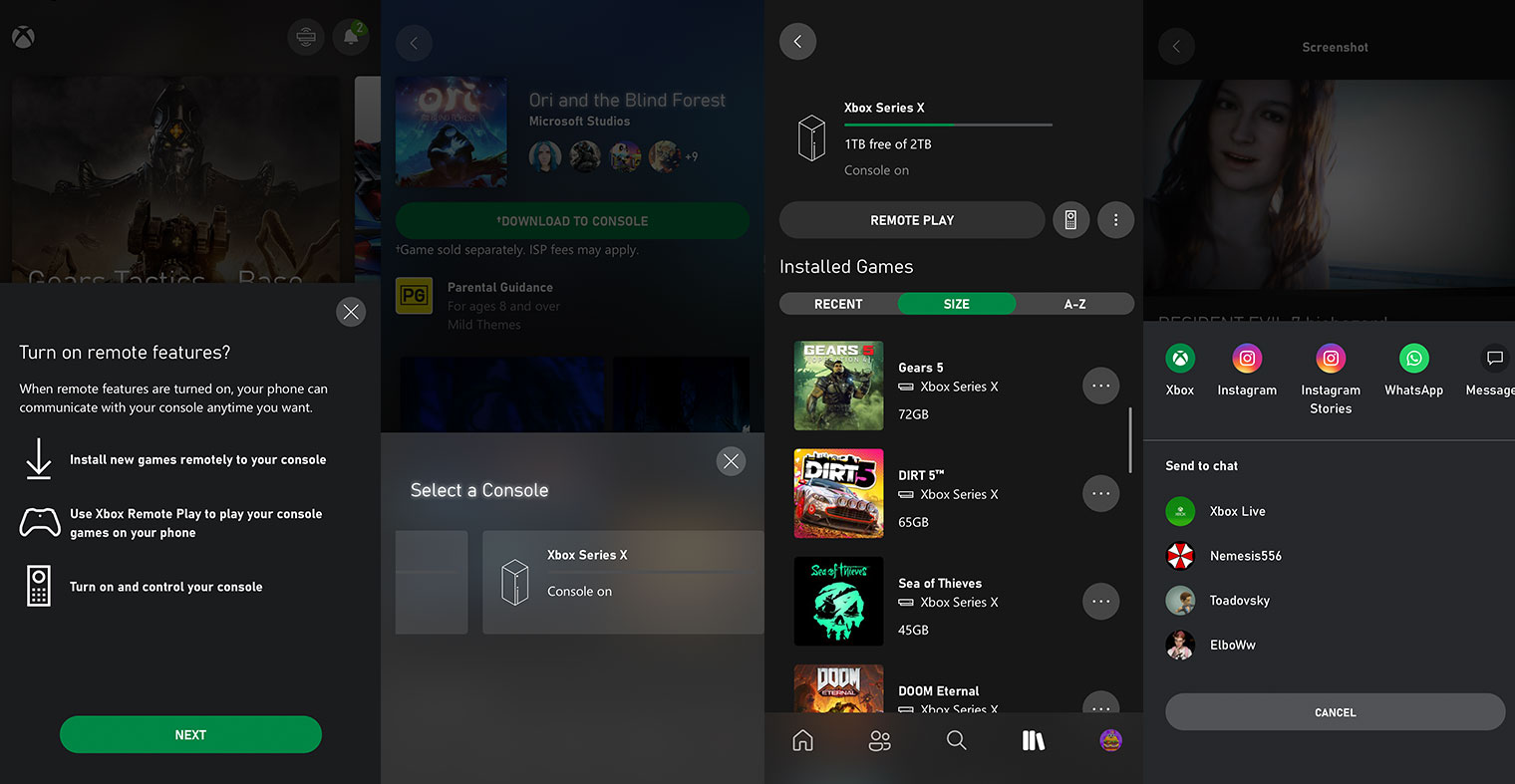
Although there’s no means of searching through the Game Pass catalogue—there’s a whole app reserved for that alone—I found it particularly odd that the app doesn’t have any actual storefront or means to purchase games. That said, I was able to download Resident Evil 2, a game I believed to be on special, and then prompt me to make the purchase once I booted it. So that’s a nice and easy to miss feature that makes remote preloading a breeze, I just feel it’s odd we’re not able to buy from within the app itself.
It’s also from within this app that the aforementioned remote play becomes possible for Xbox One X titles and I suspect, once cloud-streaming for next-gen titles is a possibility for Australians, that’ll also be funnelled through the app.
The game also features extensive sharing capabilities, but I’ll get into those in a moment when discussing the improved sharing features of the Series X.
CONCLUSION
After spending a couple of glorious weeks with it, the Xbox Series X feels like an extension of everything special Microsoft has put into place during the eleventh hour of the last generation. I can’t get enough of the stunning monolithic design, it’s the monument of my entertainment unit.
The controller improves on a familiar design and—hands-on with the DualSense pending—maintains its crown as my absolute favourite controller in-hand. During all of the marketing, a word I’ve seen bandied about to the point of exhaustion is ‘powerful’. There’s no lie here, the machine is a relentless beast, and, in the two weeks I’ve spent with it, it has refused to break a sweat over tasks that would have seen my One X’s knees buckle.
It’s fast, whisper-quiet and if you’ve ever monitored the temperature PC GPUs can clock under stress, you’d know that the heat that plumes out of the top of the Series X is a non-issue.
With every part of the user experience improved upon with the new hardware, I’m flattened that the area that’s lacking is, a tale as old as time, the software. I’d love to peer into another timeline where Halo Infinite made launch and how that would have changed the narrative, but fortunately, there does appear to be greener pastures right around the corner.
And greener pastures, I feel, is quite fitting.


